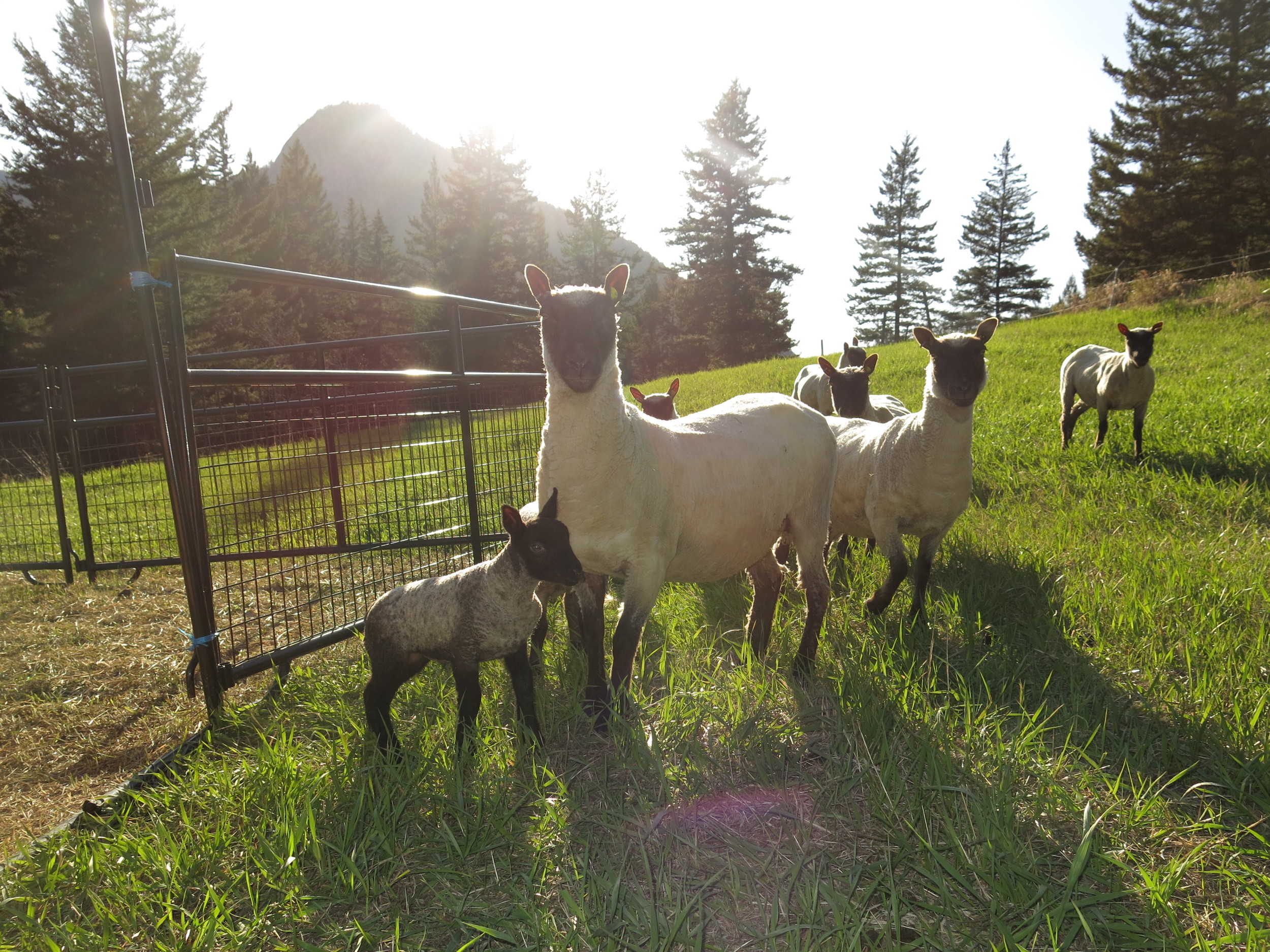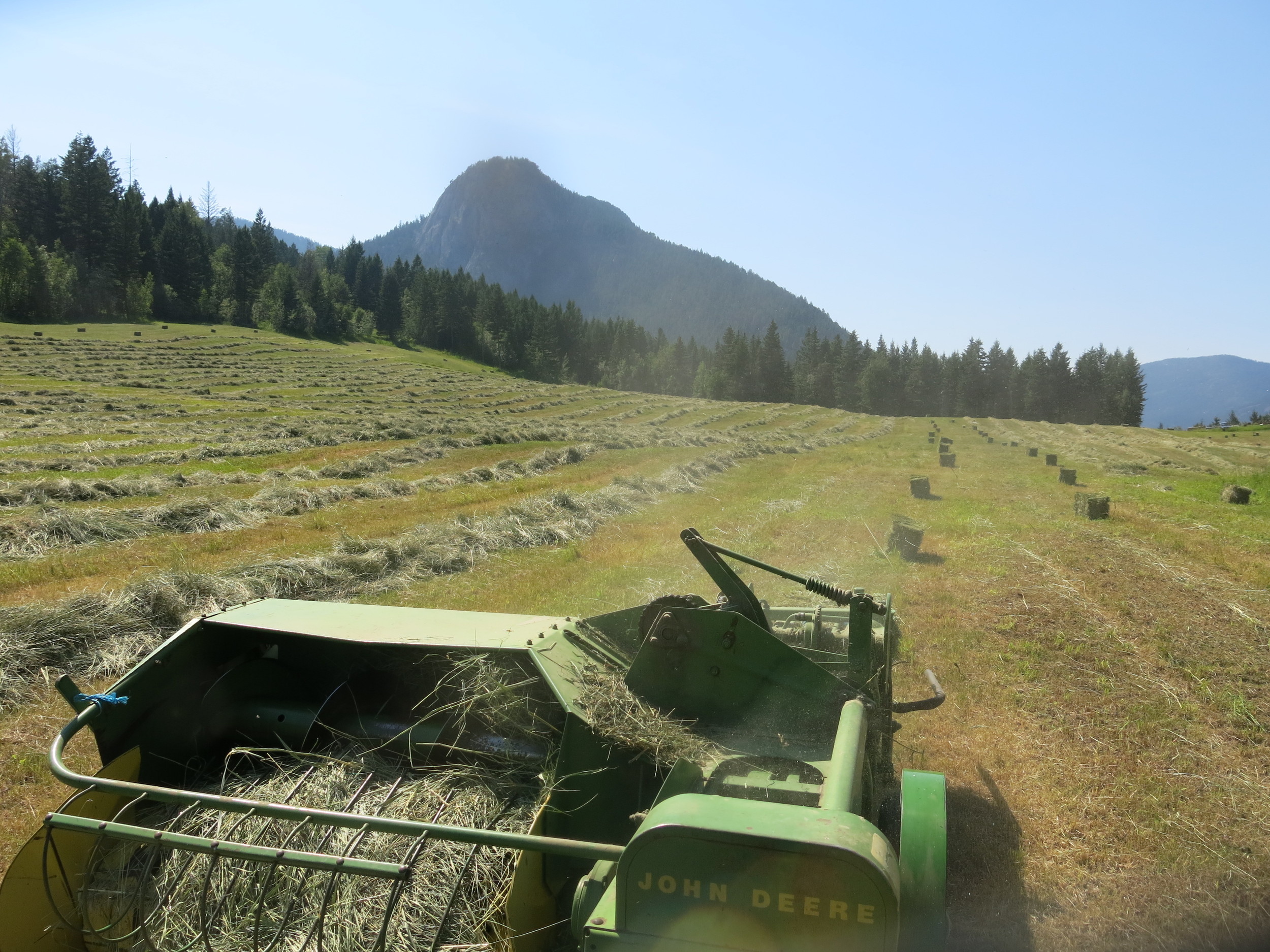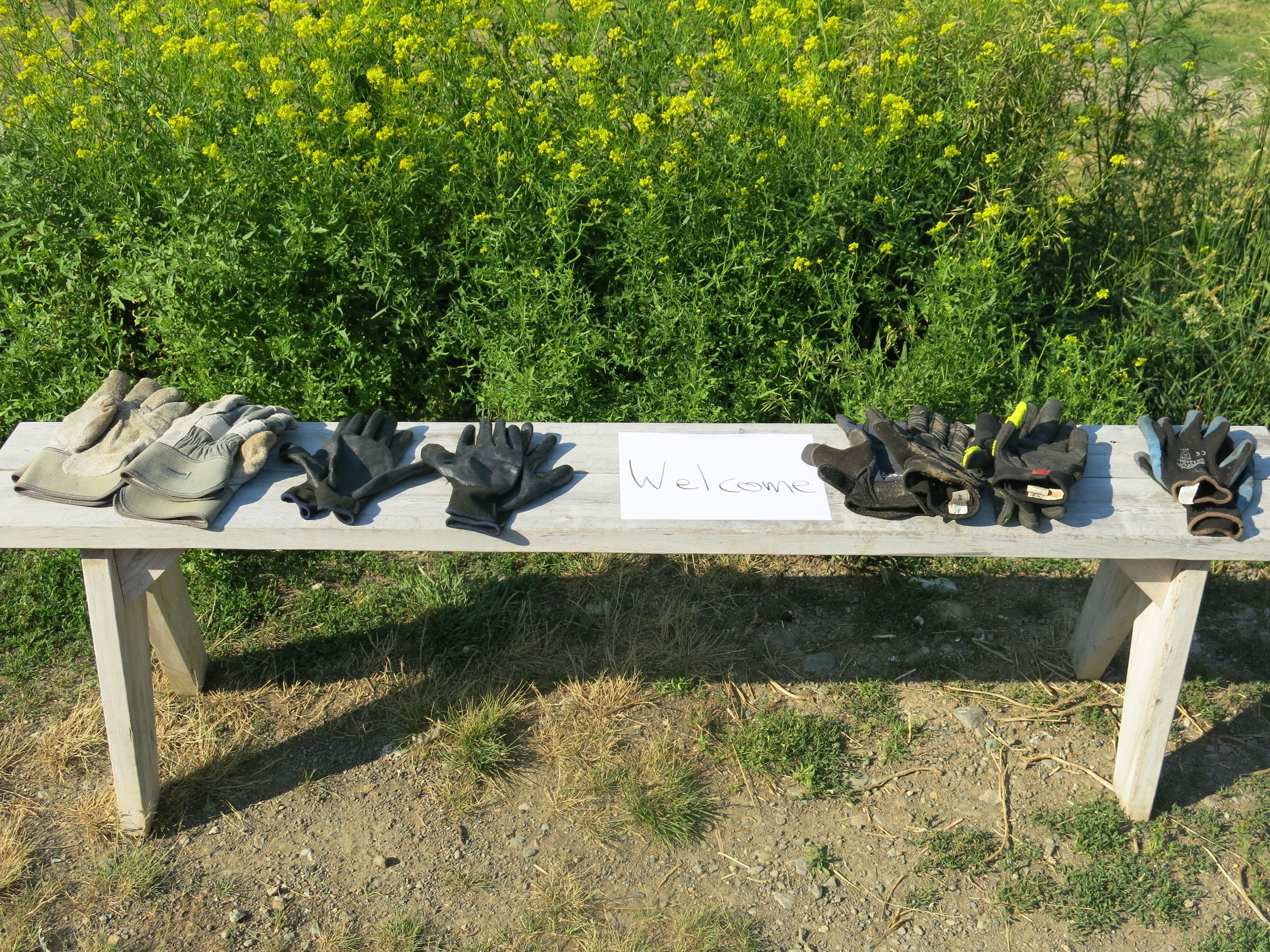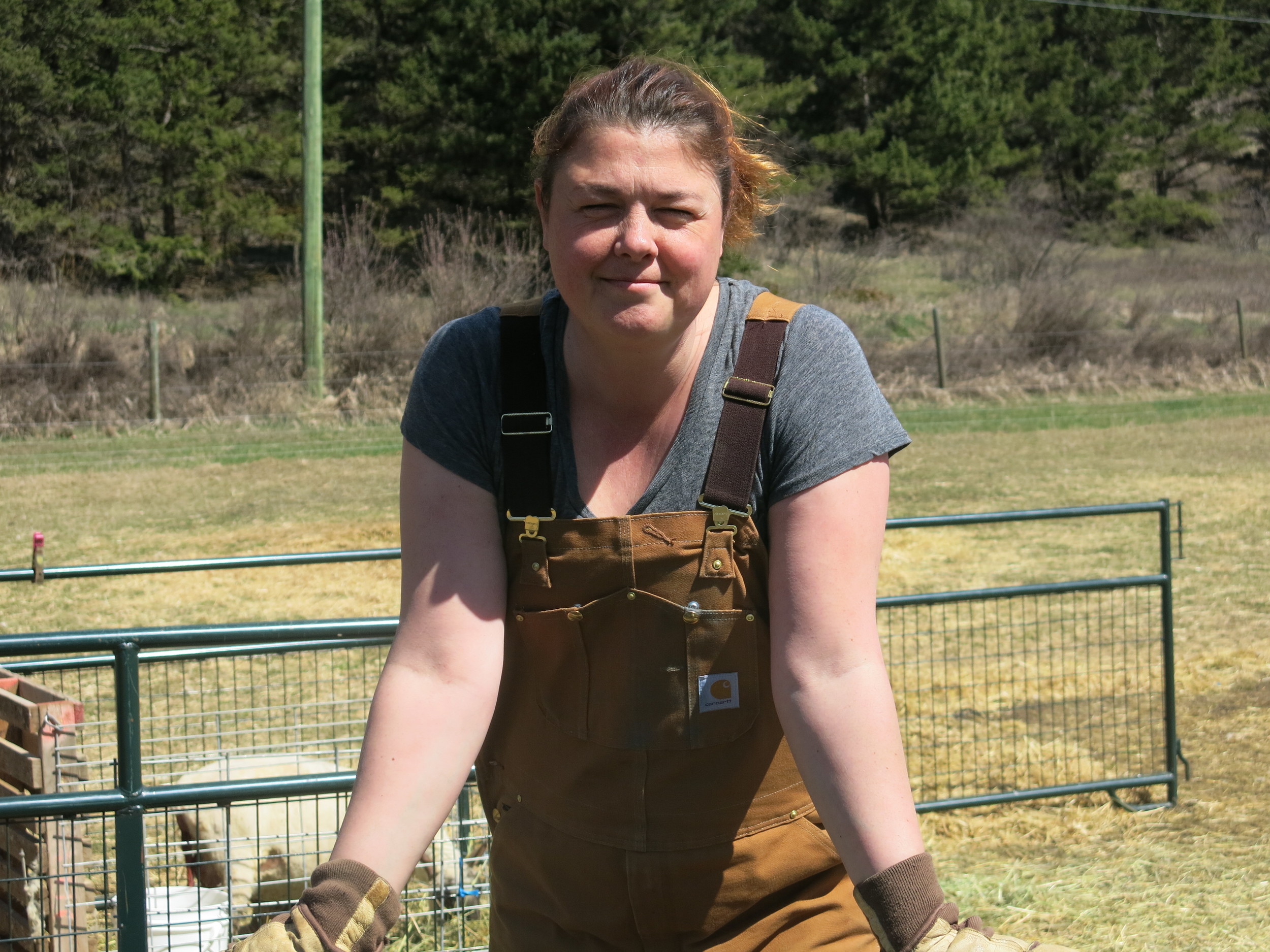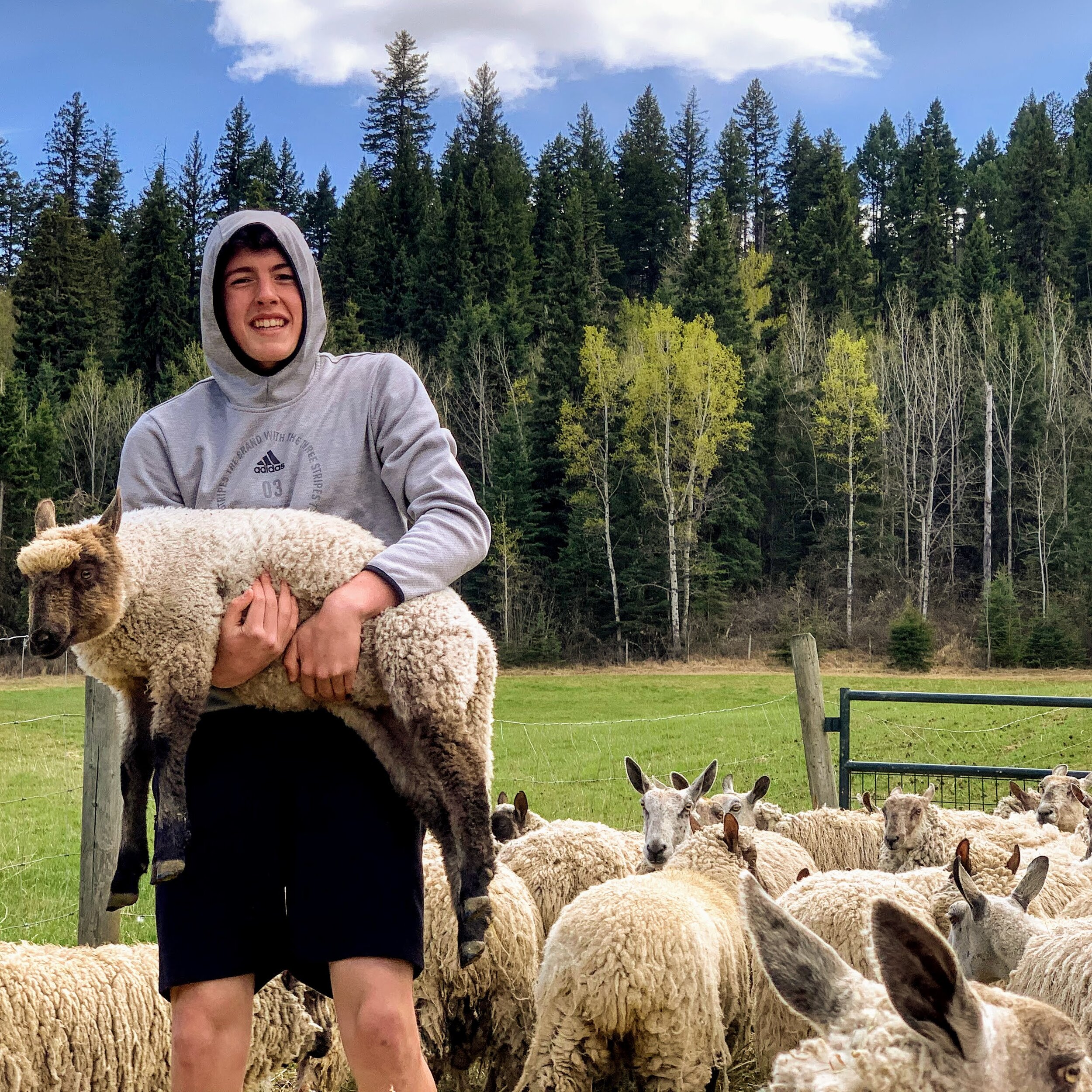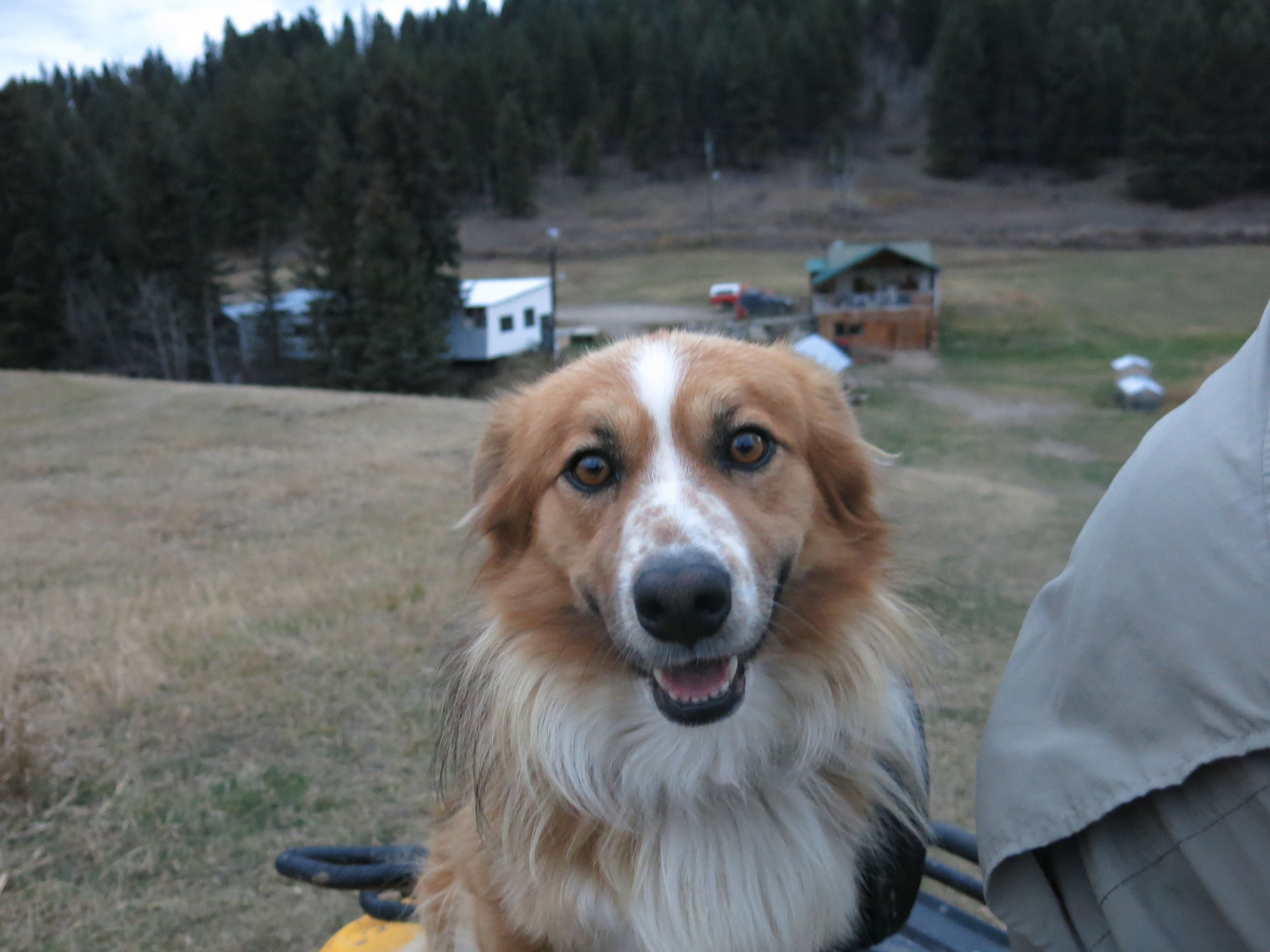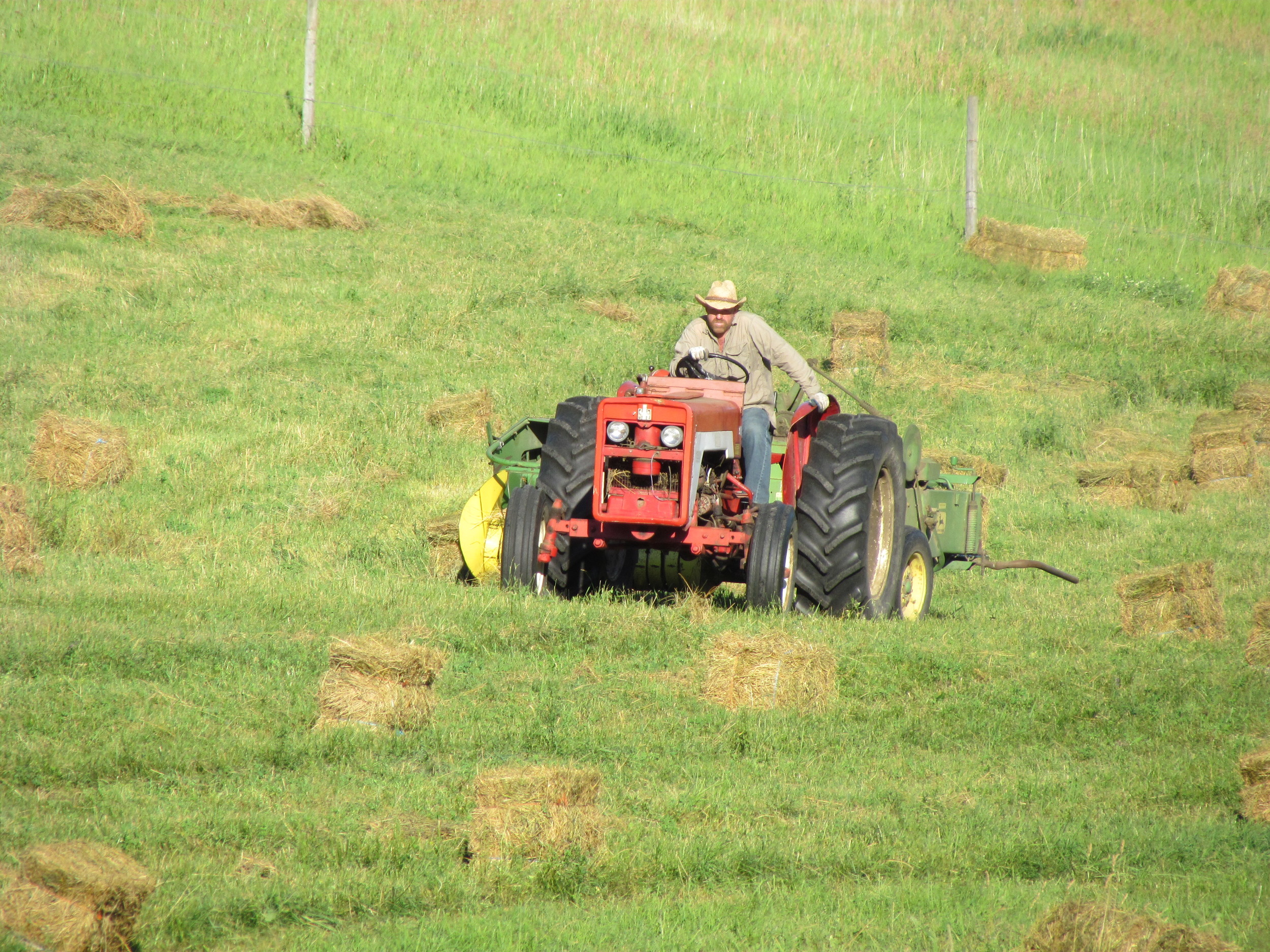
Grass-Fed Pasture Raised Lamb
Freith Farm is a 16o acre sheep and hay farm 40min outside of Kamloops British Columbia. We produce naturally and sustainably raised freezer lamb for fall delivery.
All of our meat animals are raised solely on mother’s milk and grass pasture. No other chemical medicines or wormers have been used on any animals heading for your freezer.
Enjoy the health benefits of eating grass-fed pasture raised animals finished on their native diet. This may not be the cheapest lamb you have ever purchased, but it could very well be the tastiest and healthiest.
Our sheep lamb in April and are butchered in October. We approach our past customers for reordering in July and then new customers after that. Our flock is growing but can generally only can take 5 new customers a year, so the earlier you contact us, the less likely it is that you will miss out this year.
I Registered MY Interest - WHAT'S NEXT?
In June we contact new and old customers by email to confirm your order. A non-refundable deposit of $125 is charged at the time. In October you will be asked to provide your cutting instructions. Each lamb is custom cut and wrapped to your specification. First-timer or repeat customer, we walk you through making your meat cutting choices. We will make sure that the lamb you receive suits your family size and cooking style.
DELIVERY IN NOVEMBER
In November, we deliver to your door or a pre-arranged drop off location.
Frequently Asked Questions
IS THIS THE CHEAPEST WAY TO BUY LAMB?
Nope. It will not be cheapest way to buy lamb, but eating well is never cheap. if you are looking for the cheapest short-term cost, the large chain supermarkets will almost certainly be cheaper. The cost of our lamb can be attributed to the animal being raised on pasture eating forage they would naturally choose to eat (grass not grains) and from avoiding the environmental impact of shipping in meat from the other side of the planet.
HOW MUCH WILL THIS COST?
Lambs will cost $10.00/lbs of hanging weight provided by the butcher. We aim for a hanging weight of 45-55 pounds ($450 to $550). This estimated price is for a whole lamb and includes butchering fees and transport. Half lamb is also available.
WHEN DO I NEED TO ORDER BY?
Our sheep lamb out in April and are butchered in October. We only take on about 5 new customers a year, so the earlier you contact us the less likely it is that you will miss out this year. We approach our past customers for reordering and then new customers in July. When we know we have a lamb for you, we will contact you for a non-refundable deposit of $125. Registering your interest to be put on the customer list gets you in the queue. When you get to the front of that queue you will be asked if you are still interested.
WHY ARE DEPOSITS NON-REFUNDABLE?
Deposits need to be non-refundable, because once the animals have been processed, if for whatever reason you cannot, or will not take delivery, we have no extra freezer space to store your order. The meat will need to be sold at a discount, or given away.
WHAT IS HANGING WEIGHT, AND WHY AM I CHARGED FOR THAT WEIGHT INSTEAD OF THE FINAL NET WEIGHT?
The hanging weight is the weight of the dressed lamb carcass at the point right before it is cut to your specifications. This weight is obtained with the meat cutter’s scale, and it is the weight that is commonly used to calculate charges for custom cutting and wrapping.
Using this weight is the fairest and most standard method for calculating price of whole animals. The actual yield weight (what comes to you) is influenced by the size of the individual lamb and how many cuts involving removal of bone are requested by the customer.
IF I BUY A LAMB, HOW MUCH MEAT CAN I EXPECT TO RECEIVE?
You will receive 25-35 pounds of meat, depending on what you request for cuts. For example, if you request cuts with bones, such as chops or roasts with bone in, the net weight will be higher. If you request a lot of ground lamb or stew lamb the net weight will be less because the bone will be removed.
WHAT WILL THE CUTS BE LIKE?
You will be able to specify cutting instructions, and will receive your order frozen. Your cutting instructions will include the portion size, weights, and the types of cuts you would like.
If you don’t know your Loin Roast from your Shoulder Chop, we can help you with all of that.
I DON’T HAVE MUCH FREEZER SPACE. HOW MUCH SPACE WILL I NEED?
If your space is limited to the freezer portion of a standard fridge, one whole lamb will take up three quarters of that space. If you request bones in, and/or if yours was a particularly large lamb, more space may be required. If space is at a premium, you may want to go in on a lamb with a friend or two.
If you cannot find someone to share an order with, let us know and we can try to pair similar requests with other customers also looking for a ½ lamb.
WHERE WILL I PICK UP MY LAMB WHEN IT’S READY?
When your lamb is ready we will contact you and make arrangements for delivery or pickup.
WHEN WILL MY ORDER BE READY FOR PICK UP?
Lambs will be ready in early November.
Our Breeding System
Stratified breeding (or Three-tier breeding) takes advantage of unique traits in several different breeds of sheep. Breeds are purposely chosen in to bring in specific genetic traits at each step of this system. The traditional approach we take was developed over hundreds of years of market lamb production in the United Kingdom.
Stratified Breading starts with what is sometimes referred to as a “hill or upland” breed. These sheep are typically smaller, very hardy, thick-coated, able-bodied and bold, which enables them to survive more hostile environments. Examples of upland breeds include Scottish Blackface in Scotland, Swaledale in Northern England, Welsh Mountain in Wales, and the Clun Forest in Shropshire. At Freith Farm out production system uses the Clun Forest as its upland breed. The female adults (ewes) of the upland breeds make excellent mothers.
The Stratified approach will cross breed upland ewes to a Bluefaced Leicester ram to produce progeny referred to as “Mules”. The Mule is the backbone of the UK’s prime lamb production system. Fifty percent of all UK commercial ewes are Mules. These Mules inherit the vigour and hardiness of its dam with the added benefit of increased body size, prolificness (consistent twinning), early maturity and increased milk production from her Bluefaced Leicester sire.
In the final tier of the breeding system the Mule ewes are bred to terminal sires, renowned for their heavy carcass genetics; the preferred ones being either a “British” Suffolk or the Texel. This third step in the system produces a high quality meat lamb that easily reaches market weights off milk and grass.
At Freith Farm we are replicating UK's traditional Three-tier system here in British Columbia. Our flock includes purebred Clun Forest ewes, purebred Bluefaced Leister rams, and the Clun Mules this cross produces. Our sheep are suited to the colder temperatures we experience at our higher elevation, produce twins, and thrive on the natural grass forage we feed. The prime lamb we raise is filling a growing niche in the specialty trade to restaurants, farm gate sales, the ethnic markets, and the ever growing demand by consumers for wholesome, healthy, grass fed lamb.
About
My husband (Lincoln) and I (Dione) moved on to the property with our son (Nate) in the summer of 2012. We had been looking for several years to buy rural land to raise a flock of sheep and a kid. We had no farming background and with support of amazing neighbours, farm mentors and Google we continue to learn as we go.
Our farm is 40 minutes outside of Kamloops BC, and located on 160 acres of primarily mature timber. We have 30 acres in pasture and hay field. As the grass begins growing in the spring, we begin to rotational graze the land that is too steep to harvest hay from. Near the end of June we produce around 1300 small square bales, and then begin rotational grazing on the entire pasture system. The hay we put up sustains our flock through the winter once the snow is too deep for the sheep to nose down through it. In the spring we start it all over again.
Because our flock is purposely bred for raising meat lambs on grass and mother's milk, we do not bring any forage on to the farm. This reduces our costs and makes for a sustainable operation. We calculate that we will reach an equilibrium at a flock size of 55 ewes producing 80 lambs a year. We are headed in that direction and will adjust the number as we go and know more.
If you have any questions about our lamb (or hay) don't hesitate to email farm@freith.ca or call (250) 573-2362.
How to get here...
From Kamloops: View Google driving directions
Freith Farm is a 30 minute drive up from Halston Husky gas station.
Head east on Pritchard-Pinantan Road.
You drive PAST the turn to Harper Mountain Ski Hill.
You drive PAST the entrance to Paul Lake Provincial Park.
You drive PAST East Paul Lake community, and after a minute…
Turn RIGHT on to an unpaved road call Hale-Vinnie Road
Continue on Hale-Vinnie for three minuets and look for “2734” sign on the fence post
From Prichard: View Google driving directions
This route is on a DIRT BACK ROAD
conditions are usually good, but expect washboard
If coming from East it only saves 20min driving time
go slow and enjoy
limited to no mobile phone coverage along this route
